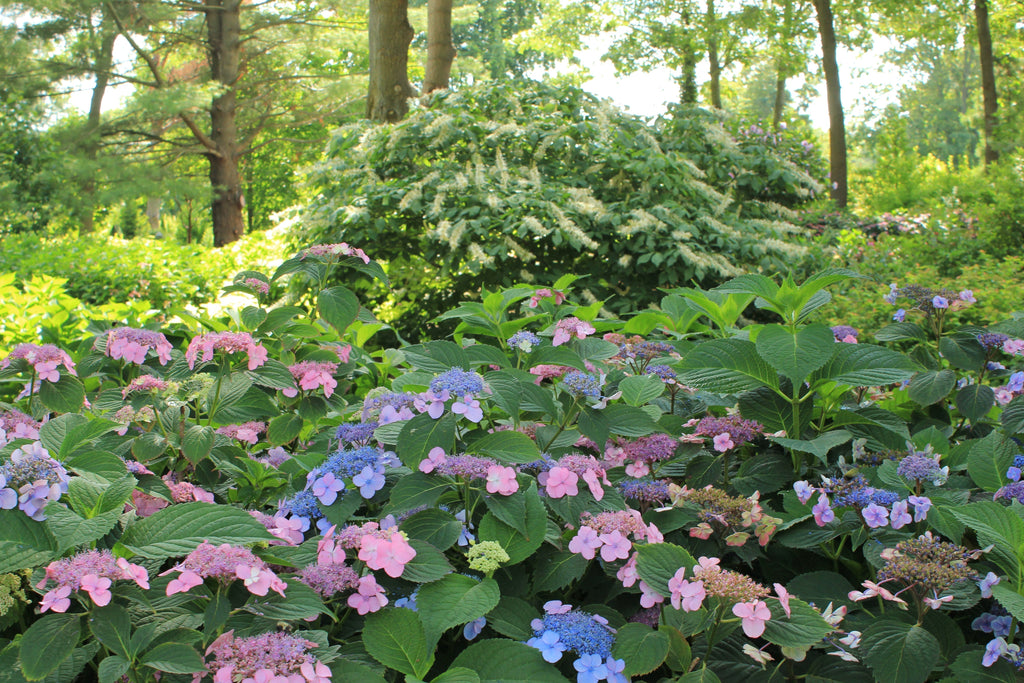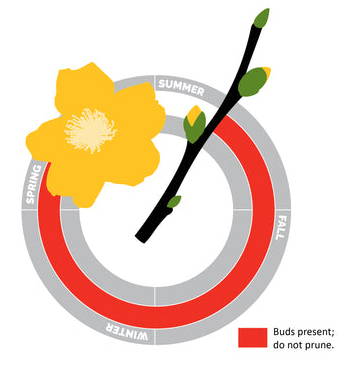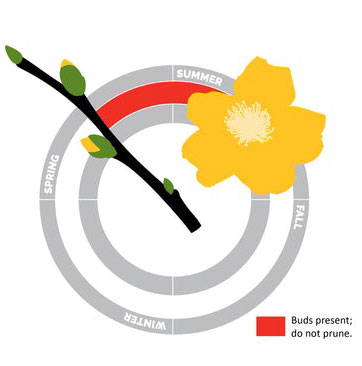Old wood, new wood - what does it mean?

When it comes to pruning any flowering shrub, the terms "blooms on old wood" and "blooms on new wood" are always included. Unfortunately, they are rarely defined, and even more rarely contextualized so that you can understand why it's important to know the difference, and how it related to when you prune your shrub. Let's change that now!
Old Wood
Shrubs that bloom on old wood create their flower buds for the following year shortly after they finish blooming during the current one. In other words, the flowers are created on wood that is at least one year old. In these cases, the plant has current year or future year flower buds on it for 9+ months each year. As such, the only time that shrubs that bloom on old wood can be pruned without negatively impacting flowering is immediately after they bloom:

In general, the earlier a plant blooms in spring, the more likely it is that it flowers on old wood. Consider springtime favorites like forsythia and lilac: they both bloom so early in spring that in order to have the energy to form flower buds, they would have had to do so in the previous season when conditions were favorable. Examples of familiar shrubs that bloom on old wood include forsythia, deutzia, lilac (Syringa sp.), flowering quince (Chaenomeles sp.), mockorange (Philadelphus sp.), ninebark (Physocarpus opulifolius), rhododendron, and weigela.
New Wood
Shrubs that bloom on new wood create their flower buds once they begin growing in spring. They put on new growth and the flower buds form - hence the "new wood." In these cases, the plant has flower buds present for as few as three months, like a rose that emerges in April and begins flowering in June, or as many as six months, like a beautyberry or blue mist spirea that emerges in April and begins flowering in August or September:

Shrubs that bloom on new wood can be pruned in fall, winter, or early spring with no risk of losing flowers. It is possible to prune plants too late in spring and interfere with flower bud development, but this doesn't usually happen, since pruning is usually done early in the season anyway. New wood bloomers tend to be those that flower in summer or fall, and include roses, butterfly bush (Buddleia sp.), beautyberry (Callicarpa sp.), blue mist spirea (Caryopteris sp.), most abelia, rose of Sharon (Hibiscus syriacus), and crapemyrtle (Lagerstroemia sp.).
Why does this matter for hydrangeas?
There are various types, or species, of hydrangeas that are enjoyed in gardens, and while we can generalize about the shrubs listed above as to whether they bloom on old or new wood, the same is not true of hydrangeas. Of the hydrangeas that we offer, some bloom on old wood and some bloom on new wood, so you can't simply apply the same approach to pruning and care to all of them. You must know which type you are dealing with, and that determines if/when you prune it.
These hydrangeas bloom on new wood: paniclehydrangea (H. paniculata), smooth hydrangea (H. arborescens), bracted hydrangea (H. involucrata)
These hydrangeas bloom on old wood: bigleaf hydrangea (H. macrophylla), mountain hydrangea (H. serrata), Cascade Hydrangea™, climbing hydrangea (H. petiolaris), oakleaf hydrangea
It's these hydrangeas that bloom on old wood that really throw everyone for a loop. After all, you just read that generally, shrubs that bloom on old wood are the ones that bloom earliest in spring, and all these hydrangeas are definitely summer bloomers. Because they do bloom so late in the season, they cannot be pruned after blooming the same way you would other old wood bloomers - they simply wouldn't have enough time to re-grow before short days and cool weather set in. The solution, fortunately, is simple: just don't prune hydrangeas that bloom on old wood at all. It's okay to selectively remove a branch here or there, or to prune out old wood, but you should never trim, shear, or cut them back. If you do, you won't harm the plant, but you will remove the flower buds for at least one year, and what's the fun in that?
One last piece of advice: if you're wondering if you should prune and you're not sure which type of hydrangea you have, the best thing to do is not prune. No hydrangeas strictly need pruning, and this thwarts the risk of disappointment.
